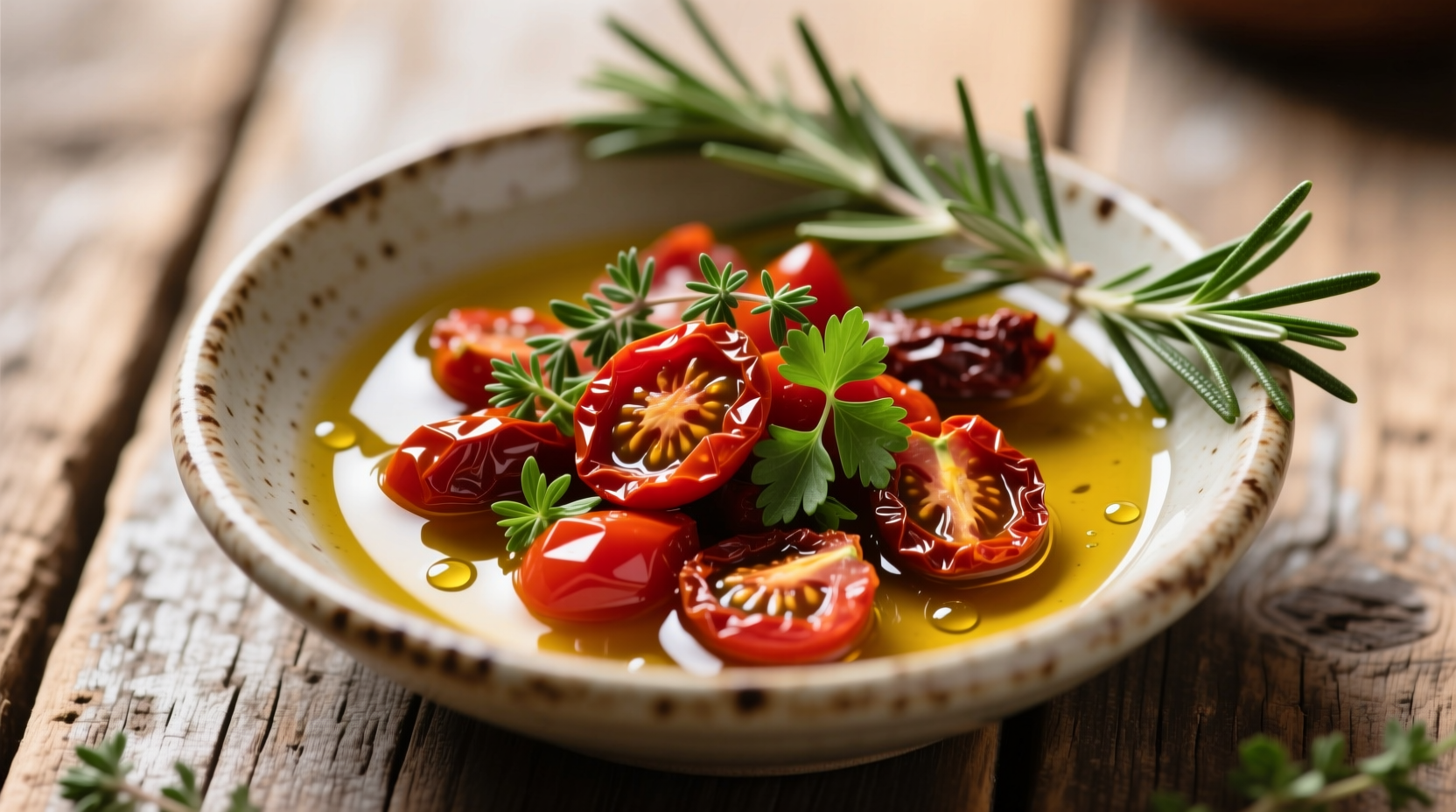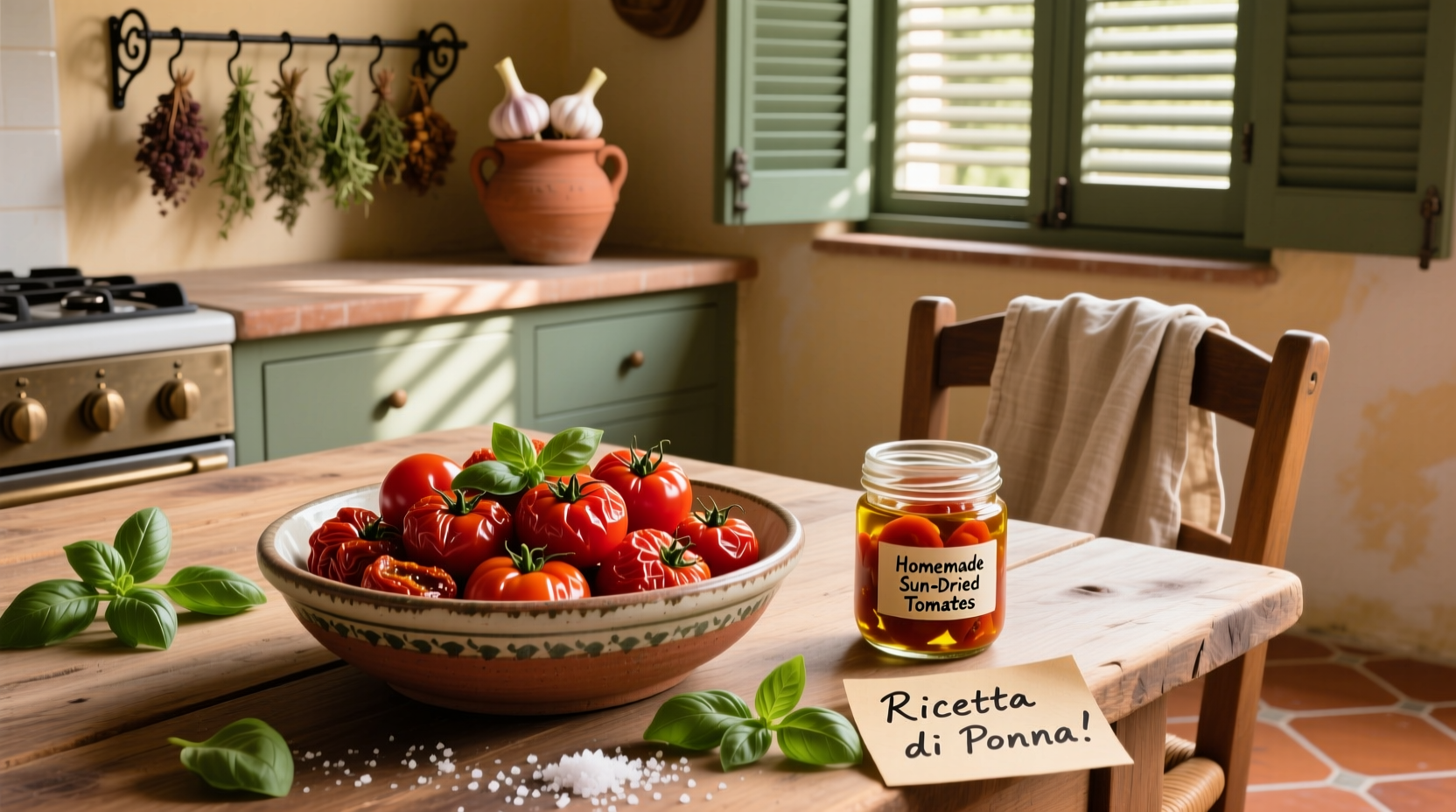Nothing elevates everyday cooking like the intense umami punch of sundried tomatoes. These concentrated flavor bombs work magic in sauces, salads, and spreads when handled correctly. Unlike fresh tomatoes, sundried varieties offer year-round versatility with their rich, sweet-tart profile that intensifies when cooked. Our tested methods solve the #1 problem home cooks face: balancing their potent flavor without overwhelming other ingredients.
Understanding Sundried Tomato Types and Quality
Sundried tomatoes come in two primary forms, each requiring different handling techniques:
| Type | Texture | Best Uses | Prep Time |
|---|---|---|---|
| Dry-packed | Leathery, chewy | Sauces, braises, breads | 20-30 min rehydration |
| Oil-packed | Soft, tender | Salads, pastas, dips | 5 min draining |
According to the Culinary Institute of America's Culinary Essentials guide, proper preparation prevents the most common flavor imbalance issue: oil-packed varieties contain up to 30% more sodium than dry-packed. Always drain and pat oil-packed tomatoes thoroughly before use unless the recipe specifically calls for the infused oil.
Professional Preparation Techniques
Master these chef-recommended methods before diving into recipes:
Rehydrating Dry-Packed Tomatoes
Cover tomatoes with boiling water and let sit for 20 minutes until pliable but still holding shape. For enhanced flavor, substitute water with vegetable broth or add a teaspoon of balsamic vinegar to the soaking liquid. Never use cold water - it creates uneven texture.
Draining Oil-Packed Tomatoes
Place tomatoes in a fine-mesh strainer over a bowl for 5 minutes, then gently press with paper towels. Reserve the oil for dressings - it's infused with tomato flavor and herbs. The USDA Food Safety and Inspection Service recommends storing this oil in the refrigerator for up to 2 weeks.
Cutting for Optimal Texture
Use a serrated knife for clean cuts without crushing. For sauces, julienne (thin strips) provides better distribution than chopping. For salads, dice into 1/4-inch pieces to prevent overwhelming bites.

7 Signature Sundried Tomato Recipes
1. Creamy Sundried Tomato Pasta (15-Minute Weeknight Dinner)
This streamlined version of the classic Italian dish solves the common problem of sauce separation. The secret? Adding pasta water gradually while emulsifying.
Ingredients:
- 8 oz linguine
- 1/2 cup oil-packed sundried tomatoes, drained and sliced
- 3 cloves garlic, minced
- 1/2 cup reserved pasta water
- 1/4 cup heavy cream
- 2 tbsp fresh basil, chiffonade
- 1/4 cup grated Parmesan
Method: Cook pasta al dente. Sauté garlic in 2 tbsp sundried tomato oil until fragrant. Add tomatoes and cook 2 minutes. Remove from heat, stir in cream and 1/4 cup pasta water. Toss with pasta, adding more water as needed to create silky sauce. Finish with basil and cheese.
2. Mediterranean Sundried Tomato and Feta Salad
Avoid the #1 salad mistake - soggy greens - by adding tomatoes last. This composition keeps textures distinct while allowing flavors to meld.
Combine 4 cups mixed greens, 1/2 cup pitted Kalamata olives, 1/4 red onion (thinly sliced), and 1/3 cup crumbled feta. Toss with lemon-herb dressing, then arrange 1/3 cup drained sundried tomatoes on top just before serving. The delayed tomato addition preserves their chewy texture.
3. Whipped Feta and Sundried Tomato Dip
Perfect for entertaining, this dip solves the common problem of overly dense spreads. The whipped texture comes from blending room-temperature feta with Greek yogurt.
Process 8 oz feta, 1/2 cup Greek yogurt, 1/4 cup sundried tomato oil, and 1 tbsp lemon juice until smooth. Fold in 1/3 cup finely chopped sundried tomatoes and 1 tsp fresh oregano. Serve with pita chips or vegetable crudités. Stores well for up to 5 days - the tomatoes actually enhance flavor as they marinate.
Flavor Pairing Science
Understanding flavor chemistry prevents mismatched combinations. Sundried tomatoes contain high glutamate levels (the umami compound), which harmonizes with:
- Dairy: Feta, goat cheese, and Parmesan enhance umami through their own glutamate content
- Herbs: Oregano and basil contain complementary terpenes that bridge tomato's acidity
- Acids: Balsamic vinegar balances sweetness without overwhelming (use 1:3 ratio vinegar to tomatoes)
According to research published in the Journal of Food Chemistry, the Maillard reaction during sun-drying creates 28 distinct flavor compounds not present in fresh tomatoes, explaining their complex sweet-savory profile.
Storage Solutions That Preserve Flavor
Extend your sundried tomatoes' shelf life while maintaining quality with these professional methods:
Oil-Packed Storage
After opening, transfer tomatoes to a clean glass jar with enough of their original oil to cover. Add 1 crushed garlic clove and 2 sprigs fresh rosemary for preservation. Store in refrigerator for up to 4 weeks. The oil will develop richer flavor over time.
Dry-Packed Storage
Place in airtight container with a silica gel packet to absorb moisture. Store in cool, dark place for up to 1 year. Check every 2 months for moisture accumulation - this prevents mold growth, the #1 cause of spoilage.
Avoid These 3 Common Mistakes
Over-Salting
Oil-packed varieties can contain 300-400mg sodium per ounce. Always taste before adding additional salt. When substituting in recipes calling for fresh tomatoes, reduce added salt by 50%.
Texture Issues
Chopping too finely releases excessive oil, making dishes greasy. For even distribution without texture loss, cut into uniform 1/4-inch pieces using a sharp knife.
Flavor Imbalance
Using too many strong flavors competes with the tomatoes' complexity. Follow the 80/20 rule: let sundried tomatoes be the dominant flavor (80%), with supporting ingredients (20%) enhancing rather than competing.
Frequently Asked Questions
Can I substitute fresh tomatoes for sundried in recipes?
No direct substitution works due to flavor concentration differences. For every 1/4 cup sundried tomatoes, use 1 1/2 cups fresh tomatoes roasted at 300°F for 90 minutes to concentrate flavors. Add 1 tsp balsamic vinegar to mimic the sweet-tart profile.
Why do my sundried tomato dishes taste bitter?
Bitterness comes from overcooking or using low-quality tomatoes. Never cook sundried tomatoes above medium heat, and always add them during the last 5-7 minutes of cooking. Choose products without citric acid (a common preservative that creates bitterness when heated).
How do I fix an overly salty sundried tomato dish?
Add unsalted tomato paste (2 tbsp per serving) or a peeled raw tomato wedge to absorb excess salt. Potatoes don't effectively reduce saltiness as commonly believed. For sauces, dilute with unsalted broth while maintaining proper consistency with a cornstarch slurry.
Can I make my own sundried tomatoes?
Yes, but oven-drying creates different flavor compounds than sun-drying. Slice Roma tomatoes 1/4-inch thick, toss with 1 tsp salt per pound, and dry at 200°F for 3-4 hours until leathery. For authentic flavor, add 1 tbsp lemon juice and 1 tsp dried oregano before drying. Store in olive oil with garlic for best results.











 浙公网安备
33010002000092号
浙公网安备
33010002000092号 浙B2-20120091-4
浙B2-20120091-4